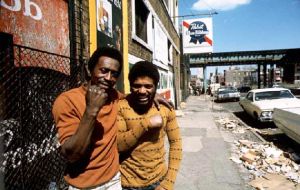MercoPress. South Atlantic News Agency
What can the U.S. learn from Latin America’s declining inequality?
 The top 1% in the US receive 15% of income, one of the most unequal countries in the world .
The top 1% in the US receive 15% of income, one of the most unequal countries in the world . By Heraldo Muñoz (*) - President Obama recently declared that inequality is “the defining challenge of our age.” When inequality is becoming a growing debate in the United States, what lessons can be drawn from Latin America, which — although still highly unequal — is the only region that managed to reduce income inequality in the last decade?
Despite being the world’s largest economy, the United States is the most unequal among the industrialized countries. In 1979, the top 20 percent of Americans received 43 percent of income, while the top 1 percent got 9 percent. Today, however, the top 20 percent of the population captures over 50 percent of pre-tax income, while the top 1 percent receives nearly 15 percent.
Meanwhile, Latin America and the Caribbean, a region of 590 million inhabitants, has steadily become more middle-income while reducing poverty and inequality. U.N. Development Program (UNDP) data shows that in 16 out of 17 countries of Latin America there has been a significant decline in income inequality over the past 10 years.
How did they do it?
• First, nearly half of the decline in inequality can be explained by improvements in an increase in income. Economic growth created greater demand for domestic goods, moving more people — particularly the poor — into the labor force, driving wage increases. This helped reduce the wage gap between college-educated workers and those without a college degree. In the United States, in contrast, this education gap has increased in recent years.
Universal access to massive primary and secondary education in Latin America was the secret ingredient for this equalizing effect in the 2000s, as noted by Tulane University professor Nora Lustig. It may be a one-off effect for the region, but it signals the high payoff of investing in education at every level.
• Second, Latin America leads the world in social programs that give financial aid to people in poverty, conditional on keeping their children in school and keeping up with vaccines and medical checkups. These transfers make up between 0.5 percent and 3 percent of GDP, but they account for nearly a third of the decline in inequality and are the principal means of poverty reduction for 18 countries in the region.
Over 25 million families, 113 million people, or 19 percent of the population, have benefited from them. Social transfers cannot substitute for weak or nonexistent social services, but they have moved financial resources into the hands of the poor — without much intermediation.
In the United States, although taxation is generally progressive, it is weaker on direct social transfers. The earned income tax credit is the key component of redistributive fiscal policy, but it works through the taxation system — which often misses the poorest households that fall through the cracks of social safety nets and labor markets.
• Finally, a “demographic dividend” (when fertility rates fall and average life expectancy increases, boosting the working age-group population) in Latin America allowed labor market participation to expand — particularly for women and youth.
The closest thing to a U.S. demographic dividend is a comprehensive immigration reform — which would enable an influx of legal labor-market entrants and its multiplier effects, including a boost to local economies.
Certainly, much more needs to be done to bring down inequality in Latin America, but there are lessons for the United States. While economic growth in the developed world continues to be tenuous, redistributive measures will demand more pre-emptive action in social policies than in labor markets.
This is a key Latin American lesson: Markets only go so far in redressing inequality gaps.
(*)Heraldo Muñoz was U.N. assistant secretary-general and U.N. Development Program director for Latin America and the Caribbean and is Chile's next Foreign minister.




Top Comments
Disclaimer & comment rules-

-

-

Read all commentsThe Americans can learn: don't let your government distract you with false and invented claims to other peoples' territory and focus our attention on the genuine issues facing your country.
Jan 28th, 2014 - 08:05 pm 0Everyone in the world calls the United States now 'The Brazil of the North”. Widely acknowledged things:
Jan 29th, 2014 - 03:42 am 0- The middle class has collapsed in the USA in all statistics.
-Poverty rate itself was 11% in 2007, now is closing in on 16%.
- Social mobility is non-existent in the USA, the worst in the developed world.
- Income inequality way up since 1980.
- College and healthcare increasingly unaffordable.
All those are acknowledged facts. As well as the non-existence of the American Dream.
Must be interesting to espouse about the world and have never been out of that shithole in Mendoza.
Jan 29th, 2014 - 02:20 pm 0Commenting for this story is now closed.
If you have a Facebook account, become a fan and comment on our Facebook Page!